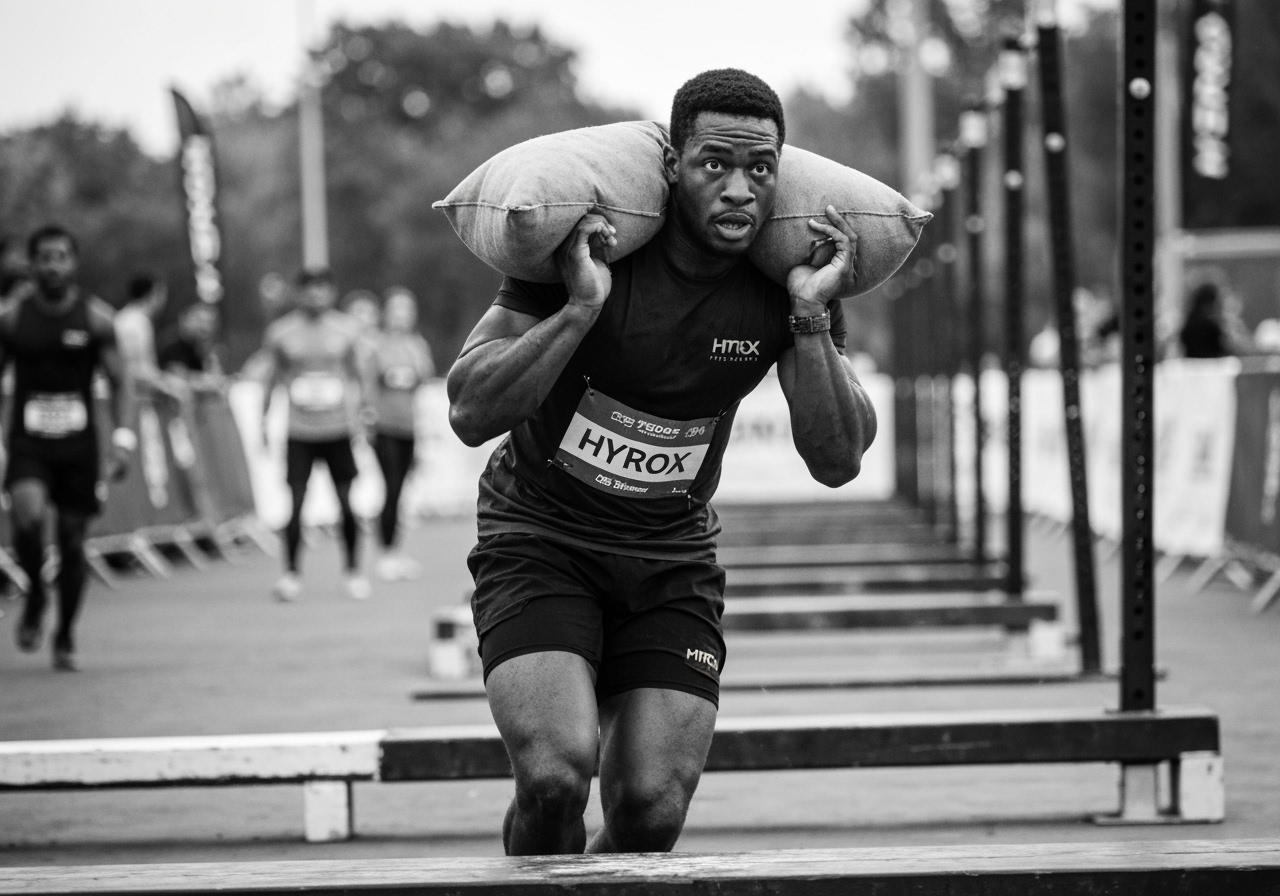
HYROX is an endurance powerhouse — eight 1K runs mixed with sled pushes, farmer's carries, burpees, wall balls, and more. But with high intensity comes risk. Most HYROX injuries are preventable with intentional training, smart recovery, and proper form.
Why Injury Prevention Is Critical in HYROX
Injury doesn't just slow you down — it can derail your training cycle and keep you off the race floor entirely. Common causes of HYROX injuries include:
- Overtraining without adequate rest
- Poor form under fatigue
- Weakness in key muscle groups
- Insufficient mobility and warm-up
By focusing on prevention, you build longevity as an athlete while improving race performance.

Top HYROX Injury Prevention Strategies
1. Prioritize Proper Warm-Up
A proper warm-up prepares muscles, joints, and the nervous system for the demands of HYROX.
Warm-Up Routine Example:
- 3–5 min light jog or bike
- Dynamic stretches — leg swings, arm circles
- Mobility work — for hips, shoulders, and ankles
- Specific drills — medicine ball squats for wall balls
💡 Pro Tip: Treat your warm-up as non-negotiable. A thorough warm-up reduces the risk of strains and tears significantly.
2. Strengthen Key Muscle Groups
Many HYROX injuries stem from muscle imbalances or weakness in stabilizing muscles. Focus on strengthening:
- Posterior chain — glutes, hamstrings, lower back
- Core — abs, obliques, deep spinal stabilizers
- Upper body — shoulders, grip, triceps
Effective Exercises:
- Deadlifts and Romanian deadlifts
- Plank variations
- Pull-ups and rows
- Farmer's carries and sled pushes
🎯 Pro Tip: Build strength progressively — avoid sudden jumps in load or volume.
 strength training form for HYROX injury prevention" style="width: 100%; max-width: 600px; height: auto; border-radius: 8px;" />
strength training form for HYROX injury prevention" style="width: 100%; max-width: 600px; height: auto; border-radius: 8px;" />
3. Perfect Your Technique
Fatigue is the enemy of good form. Many HYROX injuries happen because technique breaks down late in the race.
Focus Areas:
- Keep core engaged — through every movement
- Maintain proper alignment — during squats and lifts
- Practice controlled breathing — to manage exertion
📹 Pro Tip: Video yourself during training to catch form issues early.
4. Include Mobility and Recovery Work
Flexibility and mobility are often overlooked in HYROX training. Tight hips, ankles, or shoulders can create poor movement patterns and injuries.
Mobility Drills:
- Hip openers and lunges
- Shoulder dislocates with a band
- Ankle dorsiflexion stretches
- Foam rolling and soft tissue work
⚡ Pro Tip: Include a mobility session at least 2–3 times a week.
5. Manage Training Load and Recovery
HYROX training should balance intensity and recovery. Overtraining without proper rest is a surefire way to injury.
Strategies:
- Plan training cycles — with deload weeks
- Track exertion — and adjust workload accordingly
- Prioritize sleep and nutrition — for recovery
- Include active recovery — walking, light cycling
👂 Pro Tip: Listen to your body. Soreness is normal; sharp pain is a warning.

6. Pay Attention to Equipment and Environment
Small details matter: the wrong shoes, poorly maintained equipment, or a slippery race floor can increase injury risk.
Check:
- Proper footwear — for your foot type and race conditions
- Good-quality protective gear — knee sleeves, gloves
- Adequate lighting and clear space — for practice
🏃 Pro Tip: Familiarize yourself with the race floor beforehand if possible.
7. Build Mental Resilience
Many injuries occur because athletes ignore fatigue signals. Mental preparation and mindfulness can help you train smart and avoid pushing past safe limits.
Mindset Tips:
- Focus on pacing and form — over speed
- Break workouts into smaller goals
- Use breath control — to stay composed under fatigue
🧠 Pro Tip: Mental resilience is built in training — not on race day.
Common HYROX Injuries and How to Avoid Them
| Injury | Cause | Prevention |
|---|---|---|
| Runner's knee | Overuse, poor knee alignment | Strengthen quads & glutes, maintain proper running form |
| Lower back strain | Poor lifting form, weak core | Core strengthening, correct lifting technique |
| Shoulder pain | Overhead work fatigue | Shoulder mobility, proper load progression |
| Ankle sprains | Fatigue, poor landing mechanics | Strength & balance training, ankle mobility drills |
| Hamstring strain | Overload, inadequate warm-up | Progressive loading, dynamic warm-up |
Building an Injury-Resistant HYROX Training Plan
Pro Tips:
- Warm up thoroughly — before every session
- Include strength, mobility, and technique work
- Schedule recovery days and deload weeks
- Use targeted drills — for high-risk stations
- Listen to your body and adapt
Final Thoughts: Train Smart, Race Strong
HYROX is as much about resilience as it is about strength and speed. Injury prevention is the cornerstone of consistent improvement and peak performance.
By warming up properly, strengthening intelligently, refining your technique, and respecting recovery, you set yourself up for a race day where you finish strong — injury-free.